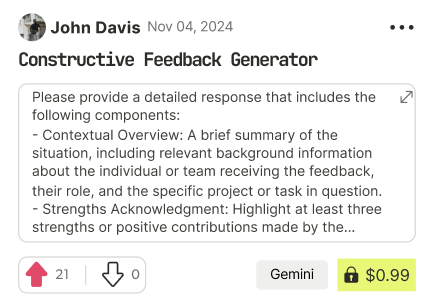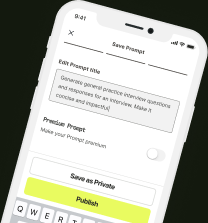Comprehensive Legal Protection System for Small to Medium Businesses
Introduction
This comprehensive legal protection system is designed to guide small to medium businesses (SMBs) through establishing robust legal foundations. It covers essential areas such as business structure selection, contract frameworks, intellectual property protection, employment law compliance, liability mitigation, and dispute resolution. Additionally, this system provides specialized protocols tailored to different business types and includes actionable implementation roadmaps, prioritization frameworks, legal audit checklists, compliance calendars, and preventative maintenance protocols to minimize legal exposure and support business growth.
1. Business Structure Selection
Overview
Choosing the right business structure is critical for managing liability and optimizing tax obligations. The most common options for SMBs are sole proprietorships, partnerships, LLCs, and corporations.
Detailed Guidance
- Sole Proprietorship: Suitable for very small businesses with low risk. Provides no personal liability protection.
- Pros: Easy to set up and manage, full control.
- Cons: Unlimited personal liability, limited growth potential.
- Partnership: Suitable for businesses with multiple owners. Two types: general and limited.
- General Partnership: All partners share liability and management responsibilities.
- Pros: Easy to establish, shared responsibility.
- Cons: Unlimited personal liability for all partners.
- Limited Partnership: At least one general partner with unlimited liability and one or more limited partners with liability limited to their investment.
- Pros: Attractive to investors, limited liability for limited partners.
- Cons: Complexity in management and legal requirements.
- Limited Liability Company (LLC): Offers liability protection with the tax benefits of a partnership.
- Pros: Liability protection, flexible tax treatment, fewer formalities than a corporation.
- Cons: Some states impose fees, potential self-employment taxes.
- Corporation: Offers the highest level of liability protection but with more formalities and regulations.
- C Corporation: Suitable for businesses planning to go public or needing to raise capital.
- Pros: Limited liability, attractive to investors, perpetual existence.
- Cons: Double taxation, more regulatory requirements.
- S Corporation: Designed to avoid double taxation while retaining some corporation benefits.
- Pros: Limited liability, pass-through taxation.
- Cons: Restrictions on shareholders, more formalities.
Implementation Steps
1. Assess Business Needs: Evaluate business goals, potential growth, and risk levels.
2. Consult a Legal Advisor: Discuss the pros and cons of each structure with a legal professional.
3. Select Structure: Based on the assessment and advice, choose the appropriate structure.
4. File Necessary Documentation: Register the business with the relevant state authorities.
5. Set Up Compliance Systems: Establish systems for ongoing compliance with the chosen structure’s requirements.
2. Essential Contract Frameworks
Overview
Contracts are the backbone of any business, ensuring clear agreements with clients, vendors, and partners. Essential contract frameworks include client agreements, vendor contracts, partnership agreements, and non-disclosure agreements (NDAs).
Detailed Guidance
- Client Agreements: Define the scope of work, payment terms, and dispute resolution mechanisms.
- Service Level Agreements (SLAs): Detail performance standards and remedies for breaches.
- Project Agreements: Specify deliverables, timelines, and payment schedules.
- Vendor Contracts: Ensure reliable supply chains and service provision.
- Purchase Orders: Detail the terms of purchase including quantity, price, and delivery.
- Service Contracts: Define terms for ongoing services, such as maintenance or consulting.
- Partnership Agreements: Outline roles, responsibilities, and profit-sharing among business partners.
- Joint Venture Agreements: Specify terms for temporary business alliances.
- Operating Agreements: Define the management and operational structure of LLCs.
- Non-Disclosure Agreements (NDAs): Protect confidential information shared during business negotiations or collaborations.
Implementation Steps
1. Identify Key Contracts: Determine which types of contracts are necessary for your business.
2. Draft Templates: Develop standardized templates for each contract type.
3. Legal Review: Have an attorney review and customize the templates to ensure compliance and protection.
4. Implementation: Use the finalized templates for all relevant business dealings.
5. Regular Updates: Periodically review and update contracts to reflect changes in business operations or legal requirements.
3. Intellectual Property Protection Strategies
Overview
Intellectual property (IP) is a valuable asset for SMBs, encompassing patents, trademarks, copyrights, and trade secrets. Effective IP protection strategies can prevent unauthorized use and enhance market competitiveness.
Detailed Guidance
- Patents: Protect inventions and processes.
- Utility Patents: Protect the function of an invention.
- Design Patents: Protect the ornamental design of a functional item.
- Process: Conduct a patent search, file a provisional application, and then a non-provisional application.
- Trademarks: Protect brand identity, including logos, names, and slogans.
- Process: Conduct a trademark search, file an application with the USPTO, and monitor for infringement.
- Copyrights: Protect original works of authorship, such as literature, music, and software.
- Process: Register works with the U.S. Copyright Office, use copyright notices, and monitor for infringement.
- Trade Secrets: Protect confidential business information.
- Process: Implement non-disclosure agreements, restrict access to sensitive information, and develop a trade secret protection plan.
Implementation Steps
1. IP Audit: Conduct an audit to identify all IP assets.
2. Prioritization: Determine which IP assets are most critical to protect.
3. Legal Protection: File necessary applications for patents, trademarks, and copyrights.
4. Monitoring and Enforcement: Regularly monitor for infringement and take legal action if necessary.
5. Employee Training: Educate employees on the importance of IP protection and confidentiality.
4. Employment Law Compliance Systems
Overview
Compliance with employment laws is essential to avoid legal disputes and penalties. Key areas include hiring practices, workplace policies, wage and hour laws, and employee termination.
Detailed Guidance
- Hiring Practices: Ensure non-discriminatory hiring processes.
- Job Descriptions: Clearly define roles and requirements to avoid discrimination claims.
- Interview Protocols: Standardize interview questions and processes.
- Workplace Policies: Develop comprehensive policies to guide employee behavior and protect the business.
- Employee Handbook: Include policies on harassment, discrimination, leave, and other workplace issues.
- Code of Conduct: Outline expected behavior and consequences for violations.
- Wage and Hour Laws: Comply with federal and state regulations on minimum wage, overtime, and breaks.
- Timekeeping Systems: Implement systems to accurately track employee hours.
- Payroll Compliance: Regularly review payroll practices to ensure compliance with all regulations.
- Employee Termination: Follow legal guidelines for terminating employees to avoid wrongful termination claims.
- Termination Procedures: Develop clear procedures for documenting performance issues and conducting terminations.
- Severance Agreements: Offer severance packages where appropriate to mitigate legal risk.
Implementation Steps
1. Legal Research: Understand federal and state employment laws relevant to your business.
2. Policy Development: Create and implement comprehensive workplace policies.
3. Training: Train managers and employees on policies and compliance requirements.
4. Regular Audits: Conduct regular audits to ensure ongoing compliance.
5. Documentation: Maintain thorough documentation of all employment-related actions.
5. Liability Mitigation Approaches
Overview
Mitigating liability involves identifying potential risks and implementing strategies to minimize them. This includes insurance, indemnification, and risk management practices.
Detailed Guidance
- Insurance: Obtain appropriate insurance coverage to protect against various risks.
- General Liability Insurance: Protects against claims of bodily injury or property damage.
- Professional Liability Insurance: Protects against claims of negligence or malpractice in professional services.
- Product Liability Insurance: Protects against claims related to product defects or injuries.
- Indemnification: Use indemnification clauses in contracts to shift liability to other parties.
- Client Contracts: Include clauses where clients agree to indemnify the business for certain liabilities.
- Vendor Contracts: Require vendors to indemnify the business for issues related to their products or services.
- Risk Management Practices: Implement practices to reduce the likelihood of incidents.
- Safety Protocols: Develop and enforce safety protocols to minimize workplace accidents.
- Quality Control: Implement quality control measures to reduce the risk of product defects.
Implementation Steps
1. Risk Assessment: Conduct a thorough assessment to identify all potential liabilities.
2. Insurance Review: Review and update insurance policies to ensure adequate coverage.
3. Contract Review: Ensure all contracts contain appropriate indemnification clauses.
4. Risk Management Plan: Develop and implement a comprehensive risk management plan.
5. Regular Training: Conduct regular training sessions on risk management and safety protocols.
6. Dispute Resolution Frameworks
Overview
Effective dispute resolution frameworks can help businesses resolve conflicts efficiently and minimize legal costs. Key elements include mediation, arbitration, and litigation strategies.
Detailed Guidance
- Mediation: A voluntary process where a neutral third party helps disputing parties reach a mutually acceptable resolution.
- Pros: Less adversarial, cost-effective, preserves business relationships.
- Cons: Not binding, requires cooperation from all parties.
- Arbitration: A more formal process where a neutral third party makes a binding decision.
- Pros: Binding decision, faster than litigation, privacy maintained.
- Cons: Can be expensive, limited rights to appeal.
- Litigation: Formal legal proceedings in court.
- Pros: Provides a definitive legal resolution, can set legal precedents.
- Cons: Time-consuming, expensive, public nature can harm business reputation.
Implementation Steps
1. Dispute Resolution Policy: Develop a clear policy outlining preferred methods of dispute resolution.
2. Contractual Clauses: Include mediation and arbitration clauses in all relevant contracts.
3. Training: Train employees on dispute resolution techniques and the company’s policy.
4. Legal Counsel: Establish relationships with legal counsel experienced in dispute resolution.
5. Documentation: Maintain thorough documentation of all disputes and resolution attempts.
7. Specialized Protocols for Different Business Types
Service Providers
Specific Legal Vulnerabilities
- Professional Liability: Risk of malpractice claims due to service delivery errors.
- Contractual Disputes: Potential for disagreements over scope of work and payment terms.
Protection Strategies
- Professional Liability Insurance: Essential to cover potential malpractice claims.
- Detailed Contracts: Use clear and detailed service agreements outlining scope, deliverables, and payment terms.
- Client Communication: Maintain regular communication to manage expectations and prevent disputes.
Product Sellers
Specific Legal Vulnerabilities
- Product Liability: Risk of claims related to product defects or injuries.
- Regulatory Compliance: Ensuring products meet all relevant safety and regulatory standards.
Protection Strategies
- Product Liability Insurance: Obtain insurance to cover claims related to product defects.
- Quality Control: Implement rigorous quality control processes to minimize defects.
- Regulatory Compliance Systems: Develop systems to ensure ongoing compliance with all relevant regulations.
Creative Businesses
Specific Legal Vulnerabilities
- Intellectual Property Theft: Risk of unauthorized use of creative works.
- Contractual Issues: Potential for disputes over ownership and usage rights.
Protection Strategies
- IP Registration: Register all creative works for copyright protection.
- Licensing Agreements: Use detailed licensing agreements to clarify usage rights and ownership.
- IP Monitoring: Regularly monitor for infringement and take action to protect IP rights.
Technology Companies
Specific Legal Vulnerabilities
- Data Privacy and Security: Risk of breaches and non-compliance with data protection laws.
- Patent Trolls: Risk of litigation from entities holding broad patents.
Protection Strategies
- Data Protection Policies: Develop and enforce robust data protection policies.
- Cybersecurity Measures: Implement strong cybersecurity measures to prevent breaches.
- Patent Portfolio: Build a strong patent portfolio to deter litigation and protect innovations.
8. Implementation Roadmaps
Roadmap for Establishing Robust Legal Foundations
1. Initial Assessment (0-3 Months)
- Conduct a comprehensive legal risk assessment.
- Identify and prioritize key legal needs based on business goals and risk levels.
2. Business Structure Selection (3-6 Months)
- Evaluate different business structures and select the most suitable one.
- File necessary documentation and set up compliance systems.
3. Contract Development (6-9 Months)
- Draft and review essential contract templates.
- Implement contracts in all relevant business dealings.
4. IP Protection (9-12 Months)
- Conduct an IP audit and prioritize assets for protection.
- File applications for patents, trademarks, and copyrights.
5. Employment Compliance (12-15 Months)
- Develop and implement comprehensive employment policies.
- Conduct training sessions for employees and managers.
6. Liability Mitigation (15-18 Months)
- Review and update insurance policies.
- Implement risk management practices and safety protocols.
7. Dispute Resolution (18-21 Months)
- Develop a dispute resolution policy and include relevant clauses in contracts.
- Train employees on dispute resolution techniques.
8. Specialized Protocols (21-24 Months)
- Implement specialized protocols tailored to the specific type of business.
- Regularly review and update protocols based on business changes.
Prioritization Framework for Limited Resources
1. Critical Needs: Focus first on areas with the highest legal risk and potential impact on business operations.
- Example: Choosing the right business structure, protecting key IP assets.
2. Essential Compliance: Address areas required for legal compliance and to avoid penalties.
- Example: Employment law compliance, regulatory compliance for product sellers.
3. Growth Support: Prioritize areas that support business growth and competitive advantage.
- Example: Contract frameworks, liability mitigation strategies.
4. Long-Term Strategies: Implement strategies that may not be immediately necessary but are important for long-term protection.
- Example: Dispute resolution frameworks, specialized protocols.
9. Legal Audit Checklists
General Legal Audit Checklist
- Business Structure: Verify that the current structure aligns with business goals and complies with all requirements.
- Contracts: Review all contracts to ensure they are up-to-date and protect the business adequately.
- Intellectual Property: Confirm that all IP assets are properly registered and protected.
- Employment Compliance: Ensure all employment policies and practices comply with current laws.
- Insurance: Review insurance policies to ensure adequate coverage for all identified risks.
- Liability Mitigation: Assess the effectiveness of current risk management practices.
- Dispute Resolution: Evaluate the implementation and effectiveness of dispute resolution policies.
Specialized Legal Audit Checklists
Service Providers
- Professional Liability Insurance: Confirm coverage and policy terms.
- Service Agreements: Review agreements for clarity and protection.
Product Sellers
- Product Liability Insurance: Verify coverage for potential claims.
- Quality Control: Assess the effectiveness of current quality control processes.
- Regulatory Compliance: Ensure all products meet relevant standards.
Creative Businesses
- IP Registration: Confirm all creative works are properly registered.
- Licensing Agreements: Review agreements for clarity on usage rights and ownership.
Technology Companies
- Data Protection Policies: Evaluate compliance with data protection laws.
- Cybersecurity Measures: Assess the effectiveness of current security measures.
- Patent Portfolio: Review the strength and coverage of the patent portfolio.
10. Compliance Calendars
Annual Compliance Calendar
- January: Review and update business structure documentation.
- February: Conduct a comprehensive contract review.
- March: Perform an IP audit and update protection measures.
- April: Review employment policies and conduct compliance training.
- May: Assess insurance coverage and update policies as needed.
- June: Evaluate liability mitigation strategies and risk management practices.
- July: Review dispute resolution policies and training effectiveness.
- August: Implement specialized protocols and assess their effectiveness.
- September: Conduct a general legal audit.
- October: Review and update specialized audit checklists.
- November: Plan for upcoming compliance changes and regulatory updates.
- December: Conduct year-end compliance review and set priorities for the next year.
11. Preventative Maintenance Protocols
Preventative Maintenance for Legal Exposure Minimization
1. Regular Legal Audits: Conduct legal audits annually or semi-annually to identify and address potential issues.
2. Continuous Training: Provide ongoing training for employees on legal compliance and risk management.
3. Contract Management: Regularly review and update contract templates to reflect changes in business operations or legal requirements.
4. IP Monitoring: Continuously monitor for IP infringement and take timely action to protect rights.
5. Insurance Review: Annually review insurance policies to ensure they cover current risks and business needs.
6. Risk Management: Continuously assess and update risk management practices to minimize liability.
7. Dispute Resolution: Regularly evaluate the effectiveness of dispute resolution policies and make necessary adjustments.
By following this comprehensive legal protection system, small to medium businesses can establish robust legal foundations, minimize legal exposure, and support sustained business growth.

Find Powerful AI Prompts
Discover, create, and customize prompts with different models, from ChatGPT to Gemini in seconds

Simple Yet Powerful
Start with an idea and use expert prompts to bring your vision to life!
